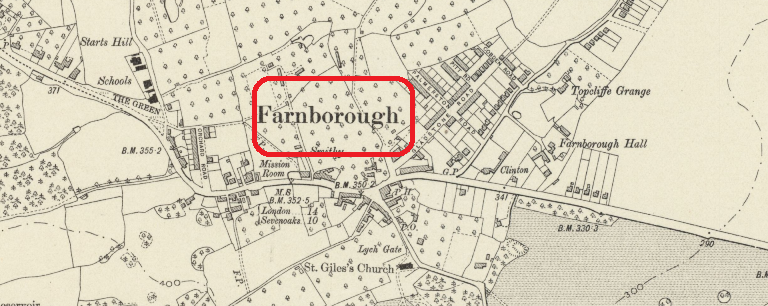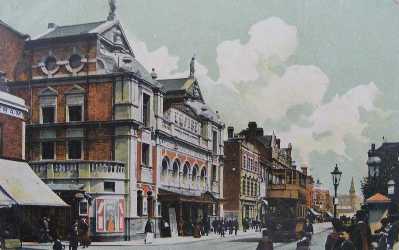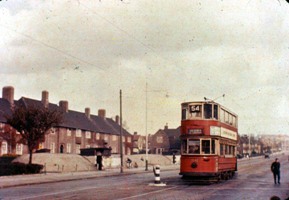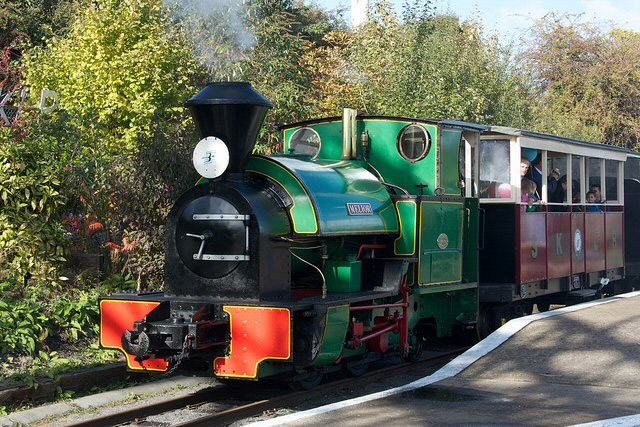BROMLEY AND DISTRICT LIGHT RAILWAY - 1905
This standard gauge railway would have started very close to the pre-existing South Eastern Railway station at Bromley (North), by the boundary between the Metropolitan Borough of Lewisham and the Urban District of Bromley.
Tram Proposal
Under the terms of the act for this tramway, compulsory purchase of houses in Farnborough Village was sought to create a three acre worksite to be used for generating equipment and a depot. The depot would be in an area bounded in the South-East by Gladstone Road. The approximate location for the depot is shown in this map, click to enlarge.

These powers would last for a period of up to three years after the start of construction. The Tramway company would also be empowered to purchase further land ‘by agreement’ and resell it at a future time.
Trams ceased running in London altogether by 1952, although of course there has been a modern revival to build the new system centred on Croydon.
Light Railway Proposal
Not to be deterred the sponsors of the proposal quickly changed it to
become a Light Railway. The planning framework for this was potentially
easier than that for a tramway, and it would have involved less
disruption in the streets, although there was still a provision to build a large depot in Farnborough.
The line was not going to connect to the main line through Bromley, but
instead be a stand-alone service seemingly with a main objective being
to finally provide Farnborough with a railway service.The line was to start just north of Bromley town centre at about the point where the borough of Bromley borders that of Lewisham.
The draft bill does not specify where the stations would have been located, but it can surely be assumed that there would have been one at or near to the centre of the village.
The proposal included the following stipulations:
47 Carriages used on the railway may be moved by animal power or mechanical power: provided that no mechanical power shall be used except with the consent of and according to a system approved by the Board of Trade.
56 The company at all times after the opening of the railways or any portion thereof for public traffic shall run a proper and sufficient service of carriages for artisans mechanics and daily labourers each way every morning and every evening (Sundays, Christmas Day and Good Friday excepted) at such times not being later than 8 in the morning or earlier than 5 in the evening respectively as may be most convenient for such workmen going to and returning from their work at fares not exceeding one half penny for every mile or fraction of that distance.
Here are two items of correspondence concerned with the submission:
|
|
|
Evidently the bill was either not approved, or the project could not be financed.
Had the railway been built it would probably not have lasted very long, as the 47 omnibus was operating along the same route by 1914.
see also Light Railway Act 1896
MAIN LINES
A Contemporary Account
The trams started at Victoria and finished their journey at Grove Park. On Downham Way there were two sets of tramlines and at Bromley Road there were two sets of three tramlines. This was because on Downham Way the trams got their electric power from the overhead cables and on Bromley Road the power was in a conduit under the third track.When the trams reached Bromley Road the driver would get out of the tram and manually disconnect the overhead power and then slip a large electrical conductor, which was called the “shoe”, under the tram and connect it to the middle track.
When the driver did that the locals called it the Changeover.
Trams were not comfortable to ride in. They rocked from side to side and to get on a tram one had to walk into the middle of the road in order to board.
Downham Hall Community Centre
Housing in Farnborough
Mr. Thomas Hubbard acquired part of the pastureland of the Farnborough Hall Estate from Sir Percival Hart Dyke in 1899 for building purposes. Hubbard was a patriotic man and named the roads after parliamentary statesmen.Farnborough had no significant local industry for residential expansion except Fox's Brewery at Green Street Green, but a railway connection was planned through Farnborough which prompted Hubbard's development. This was indeed the Bromley and District Light Railway.
The village population increased markedly in the 20 years to 1911, compared to the preceding 100 years when it had been stable at only about 500 people.
The railway was of course never built and by 1910 the builder had gone bankrupt. Probably as a consequence the eastern side of Gladstone Road was not fully developed. Further housing has been added over the years, some built on the ends of gardens of villas in Tubbenden Lane South, originally much longer,
The terraced and semi-detached houses in these streets were workmen's cottages (although No. 26 Gladstone Road was a Barber's shop) named in groups such as "Ruskin Villas", "Sidney Cottages" or individually such as "The Laurels" and "vydene". The housing and remaining small scale industrial buildings dating from this era share a common local style of stock bricks, slate roofs and delicate ornamental tile and window details
The eastern frontage of the development runs along Tubbenden Lane which at the time faced directly onto the lands of Farnborough Hall, the entrance to which is today sandwiched between later housing, mainly post second world war.
Along Tubbenden Lane the Victorian/Edwardian Villas are in spacious plots which were given romantic original names like "Camelot", "Ivanhoe" and Nos. 318 and 314. "Martindale" and "Marsland". The last pair, although altered, are in the Bromley 'Arts and Crafts" style with rendered walls, high pitched roofs and carefully, arranged windows.
Adapted from a London Borough of Bromley publication 1995.





